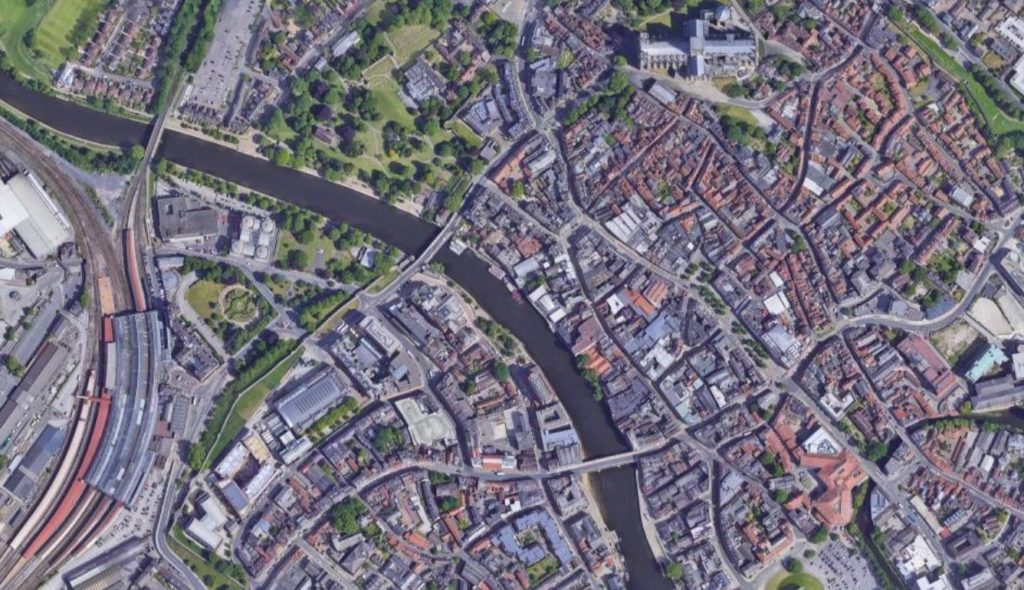
This event was a walk around the city centre, co-created with York resident and Environment Forum member Debby Cobbett. Debby wanted to take a positive look at the city centre and imagine it when we’ve made the changes needed to address the climate crisis – using ideas from the Environment Forum’s vision for the city (published some years ago and written by the Forum’s then chair Kate Lock) and ideas brought on the walk by participants.
For us, it was a chance to ask how our environment reflects and responds to our priorities and agendas. We talk of York as a place with heritage – its structure has been created over a long period of time. The fact that it still works as a focus for our lives is a result of how existing fabric has been adapted and new fabric inserted – right up to the present day. What can we learn from looking at the evidence of this process and what can it tell us as we take an optimistic look at a future York? How will this future city – one which has responded to climate change (both in seeking to minimise it and in responding to that climate change which is inevitable) – look and function?
After introductions, we walked and talked. Everyone had a clipboard and Post-Its and ideas, questions and comments were all noted and are recorded in our Flickr archive here. What follows are some very brief comments on interesting issues which came up.
- We can’t just consider the city centre in isolation – the reasons for people coming into the city centre will depend in part on what their own neighbourhood contains, and the means of transport the use will depend on what is easiest / most reliable / most affordable / safest – a range of considerations (and work we have done previously suggests that many issues in the surrounding villages match those in the city centre). Likewise responses to flooding on our two rivers need to consider a wide catchment – slowing the flow upstream could have major benefits but requires new engagement between the city and people who live and work the land some way distant.
- We are uncertain about the types of transport which are likely to become the norm in the city centre, and indeed uncertain about what would be best. Walking and cycling will need to be key, but what else? Are trams a good solution, or do we need to think more of “mobility as a service” and flexible, on-demand modes of sustainable transport? Do the Tier scooters and e-bikes point the way, or will we see shuttles similar to airports? How are wheelchair users accommodated, both in accessing the centre and then moving around it?
- How can we green the city centre, given the requirements for emergency access and the network of services beneath the ground? How can we use rooftops for more than simply keeping the rain out of buildings?
- What will the city centre be used for? If we think of re-purposing city centre car park space, what do we want there instead – public space and landscape, or more housing to create city centre residential community?
- How do we reconcile challenges – for example the wish to encourage variety and local economy and discourage multi-nationals with the realities of life? For example McDonalds is frequently quoted by young people as one of very few city centre indoor spaces where they are welcomed, feel safe and find affordable.
- How do we create the sort of welcoming permeability – routes that people want to use – to connect new and existing spaces (for example the new public realm which will replace the Castle Car Park) with the broader city centre?
- There are connections between the local/physical (what are building frontages like and how do they relate to public space; what activities do they provide) and the economic (what is profitable and how do we alongside that create places which do not demand that people spend money). How does the overall city economy thrive and cope with changes without empty units being a consequence?